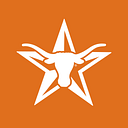Getting Started with Backcountry Cooking
by Connor Chewning, Program Assistant/Adventure Trip Guide/Climbing Wall Supervisor
Outdoor cooking can be a breeze once you are familiar with the options that can help you create 5-star meals no matter where your adventure takes you!
3 Options for Cooking Outdoors
1. Cook Fresh Foods
When it comes to cooking outdoors, it’s best to buy from the grocery store, just like at home!
Pros: Healthy, tasty, cheaper, fun! Nothing beats a fresh avocado!
Cons: More weight.
Option best for: Short weekend trips or when you do not have to carry food very far in a backpack.
2. Cook Dehydrated
Dehydrated ingredients are perfect for cooking outdoors. You can even use fresh ingredients that you have at home and dehydrate on your own!
Pros: Healthy, tasty, cheaper, fun project.
Cons: Takes the most preparation before a trip, need a dehydrator or oven.
Option best for: Longer trips where you still want more variety of food and to get fresher flavors in your meals.
3. Buy Freeze Dried Foods
If you’re looking to pack lightly during your outdoor adventure, freeze dried foods are the perfect option.
Pros: Lightest option, convenient (just add boiling water and wait 10 minutes), basically never expire.
Cons: Most expensive (about $6–10 per meal), taste of meals can sometimes hit or miss.
Option best for: Really long trips when weight and volume are a concern.
Check out Mountain House and Backpacker’s Pantry to get your freeze dried pantry started!
Remember that there is no one size fits all, try out all the methods and see which ones you like the best. I generally choose a combination of all options to manage the tradeoff between variety, weight, and convenience.
What do you need to do some real cooking outside?
Canister Stove
The Jet Boil Stove and MSR Pocket Rocket are ideal for outdoor cooking.
Pros: Most intuitive stove style, fuel is lighter
Cons: Harder to manage heat of stove (especially if baking)
White Gas Stove
I recommend the MSR Whisper Light.
Pros: More versatile (Can use white gas, kerosene, and sometimes even comes with a canister adapter), great at high altitudes, best stove for backcountry baking, fuel is really easy to find, canisters are refillable.
Cons: Fuel is slightly heavier to carry, starting stove is less straightforward than turning on gas and lighting.
Pot, Pan and One Lid
Make sure these items are light and the appropriate size for the type of meal you are cooking.
Frybake pans are lightweight and perfect for outdoor cooking!
If you have pots or pans that do not have handles on them you will want some Potgrips.
Lids can also serve as cutting boards for fruits and veggies.
Cooking Spatula and Spoon
2 Lighters (one as a backup)
Pocket Knife
Look for one that locks, Opinel is a great brand.
Bowl and Eating Utensil
I love Nalgene bowls, but you can always bring your favorite Tupperware from home!
I also prefer the GSI Scraper as a spoon but you can always bring a spoon from home, too.
Getting Prepared Before Your Trip
Things to do:
- Plan your meals.
- Prep your food.
- Precut fresh veggies.
- Make a spice kit! No meal is worth eating without the proper flavoring.
Questions to ask yourself:
- How many people are you cooking for?
- What activities are you doing? Burning a lot of calories or more laid back?
- Do you have to carry it? Consider light options that produce less trash.
- Does anyone on your trip have food allergies?
- Can you take one of your favorite home-cooked meals and evolve it to be a backcountry masterpiece?
- How much fuel will you need to bring in order to cook everything?
- Will you need to carry in water for cooking, or is there water at your planned campsite?
- Are there ingredients that you can combine and pack together to save time in the field? (Ex: mixing flour, baking soda, salt, and spices for backcountry biscuits)
Ready to sit down and cook? Be sure to follow these tips first.
Wash your hands.
This is crucial for maintaining good health and hygiene in the backcountry. Also considerate for whoever is eating your food!
Get out all ingredients and tools you will need for the meal.
This keeps you from having to get up and leave the stove unattended while cooking and also reduces the chance that you may knock over the stove!
Clear out an area to cook in.
Don’t cook near your tents or anything else flammable.
Look for a nice clear area away from vegetation.
Move gear and anything not needed for cooking away from the stove to reduce traffic around the cooking area.
Don’t overflow your pot.
Don’t try to cook too much food in the same pot. You may need to cook different batches if there are a lot of people and you only have small pots or pans.
Don’t go light on the spices!
It’s no secret that spices make a meal. Salt is crucial to making your food taste good and also helps replenish the electrolytes in your body after a hard day’s work.
You can make a bag with spices that you already love to cook with. I put my spices in small Nalgene containers (REI sells these individually in most stores) but plastic bags that you refill before each trip work, too!
My spice kit always has:
- Salt
- Pepper
- Oregano/Italian Seasoning
- Crushed Red Pepper
- Paprika
- Curry
- Cumin
- Cinnamon
- Sugar
- Yeast
- Baking Soda
- Olive Oil
- Fresh Garlic
- Soap
- Coffee and Tea
Ready to get started? Check out the video below for more tips from Connor and a tasty recipe for quinoa and black beans.
